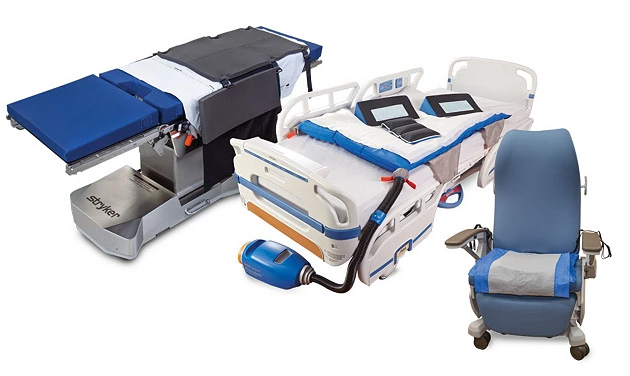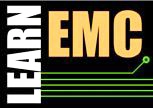
Medical Systems Design for EMC Compliance
A short course presented on-site at Fujifilm in Bothell, WA USA
November 18-20, 2025
This course reviews fundamental concepts and design strategies that engineers can utilize to ensure their products meet electromagnetic compatibility requirements the first time they are tested and at the lowest possible cost.
The information on this page is for Fujifilm employees attending the course above. The page will be available until December 21, 2025.
Course Slides
The course slides can be downloaded here.
Supplementary Notes
The EMC Course Notes downloadable in the links below have additional information related to topics covered in this course.
Course Description
This 3-day course provides an overview of electromagnetic compatibility (EMC) requirements and design considerations.
Course Outline
Day 1 - Important Fundamental Concepts
- Introduction
- Overview of Electromagnetic Compatibility
- Test Methodologies - CE, RE, RI, EFT, ESD
- Unique Aspects of Medical Device EMC
- EM Coupling Mechanisms
- Signal Routing and Termination
- Tracing Current Paths
- Transition Time Control
- RLC Circuits
- Transmission Lines
- Identifying the Unintentional Antennas
- Essential Elements of an Antenna
- What Makes a Good Antenna?
- What Makes a Poor Antenna?
- Noise Sources and Coupling Mechanisms
- Integrated Circuits as Sources of EMI
- Parasitic Oscillations and Unexpected Sources
- Coupling Between Noise Sources and Antennas
- Differential Mode to Common Mode Conversion
- Grounding
- EMC Ground vs. Current Return
- EMC Ground Structures and Grounding Conductors
- Dealing with Requirements for Isolated Grounds
- Strategies for Mixed-Signal PCB Layout
- Managing Current Return Paths
- Managing Ground
- Medical Device Examples
- Shielding
- Electric Field Shielding
- Magnetic Field Shielding
- Shielding Enclosures
- Cable Shielding
Day 2 - Electrical Design
- Filtering
- Insertion Loss
- First-Order Low-Pass Filters
- Second-Order Low-Pass Filters
- Components Parasitics
- PCB Filter Layout
- DC Power Distribution and Decoupling
- Effective Power Distribution Strategies
- Choosing and Locating Decoupling Capacitors
- Low-Inductance Capacitor Connections
- Isolating PLLs and Other Sensitive Devices
- Key System-Level Design Considerations
- For Radiated Emissions Tests
- For Conducted Emissions tests
- For Radiated Immunity Tests
- For Electrical Fast Transient Tests
- For Lightning Surge Tests
- For Electrostatic Discharge Tests
- An EMC Compliance Strategy
- Reviewing a System Design
- Reviewing a Board Design
- Identifying Grounds, Current Paths and Antennas
- Recognizing Safety Critical EMC Issues
- Performing a Worst-Case Analysis
- Specific Design Examples
- Onboard Wi-Fi and GPS Antennas
- LVDS Interface
- Ethernet Interfaces
- Heart Monitor
- Examples Provided by the Class
Day 3 - Mechanical Design and Practical EMC Lab Skills
- Mechanical Design
- Overview of Important Design Considerations
- Electrical Bonding
- Shielded Enclosures
- Other Shields
- Heatsinks
- Cable Selection
- Cable Routing
- Cable Shielding
- Connectors
- Ferrites
- Key Mechanical Design Considerations
- For Radiated Emissions Tests
- For Conducted Emissions Tests
- For Radiated Susceptibility
- For ESD and Transient Tests
- EMC Test Equipment
- Spectrum Analyzers & EMI Test Receivers
- Oscilloscopes
- Vector Network Analyzers
- Current Probes
- Near-Field Probes
- Test Environments
- Troubleshooting
- General Approach
- Tools & Techniques
- Troubleshooting Examples
- Mitigation
- Course Summary
- Review of Key Concepts
- Resources for EMC Problem Solving
Course Instructor

Dr. Todd H. Hubing is a Professor Emeritus of Electrical and Computer Engineering at Clemson University and former Director of the Clemson Vehicular Electronics Laboratory. He has contributed to the development and analysis of hundreds of electronic components and systems and is one of the very few consultants who guarantees that the products he reviews will meet all their EMC requirements on the first test pass. Dr. Hubing has taught EMC classes to hundreds of university students and reached thousands of working engineers and technicians through his EMC short courses and seminars.
